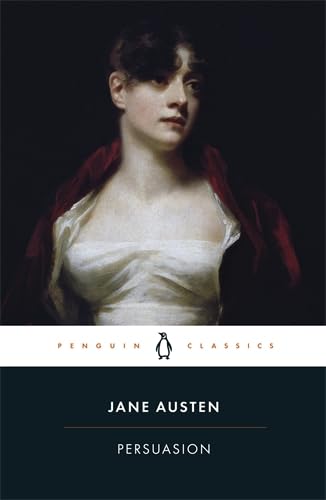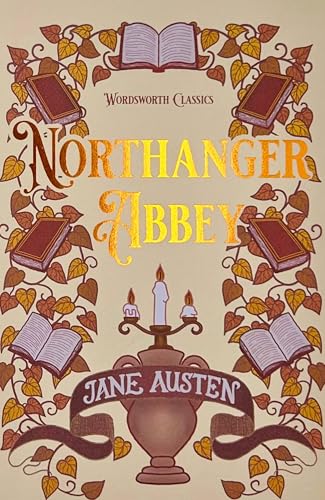If there is such a thing as The Queen of Regency Romance, then English author Jane Austen would surely be the person wearing the crown. Born in 1775, Jane Austen authored six books which have been adapted into film, television, plays, and books many times over.
Sense & Sensibility (1811)
Marianne Dashwood wears her heart on her sleeve, and when she falls in love with the dashing but unsuitable John Willoughby she ignores her sister Elinor's warning that her impulsive behaviour leaves her open to gossip and innuendo. Meanwhile Elinor, always sensitive to social convention, is struggling to conceal her own romantic disappointment, even from those closest to her.
Marianne Dashwood wears her heart on her sleeve, and when she falls in love with the dashing but unsuitable John Willoughby she ignores her sister Elinor's warning that her impulsive behaviour leaves her open to gossip and innuendo. Meanwhile Elinor, always sensitive to social convention, is struggling to conceal her own romantic disappointment, even from those closest to her.
 Austen's first book was adapted into a play which was first recorded and televised in 1950. Since then it's been adapted into film an additional six times. This includes the movie version of the book Bridget Jone's Diary, which itself is an adaptation of Sense & Sensibility.
Austen's first book was adapted into a play which was first recorded and televised in 1950. Since then it's been adapted into film an additional six times. This includes the movie version of the book Bridget Jone's Diary, which itself is an adaptation of Sense & Sensibility.
Pride & Prejudice (1813)
 Spirited Elizabeth Bennet is one of a family
of five daughters, and with no male heir, the Bennet estate must
someday pass to their priggish cousin William Collins. Therefore, the
girls must marry well—and thus is launched the story of Elizabeth and
the arrogant bachelor Mr. Darcy, in a novel renowned as the epitome of
romance and wit.
Spirited Elizabeth Bennet is one of a family
of five daughters, and with no male heir, the Bennet estate must
someday pass to their priggish cousin William Collins. Therefore, the
girls must marry well—and thus is launched the story of Elizabeth and
the arrogant bachelor Mr. Darcy, in a novel renowned as the epitome of
romance and wit.
 Spirited Elizabeth Bennet is one of a family
of five daughters, and with no male heir, the Bennet estate must
someday pass to their priggish cousin William Collins. Therefore, the
girls must marry well—and thus is launched the story of Elizabeth and
the arrogant bachelor Mr. Darcy, in a novel renowned as the epitome of
romance and wit.
Spirited Elizabeth Bennet is one of a family
of five daughters, and with no male heir, the Bennet estate must
someday pass to their priggish cousin William Collins. Therefore, the
girls must marry well—and thus is launched the story of Elizabeth and
the arrogant bachelor Mr. Darcy, in a novel renowned as the epitome of
romance and wit. Although Pride & Prejudice is Austen's second book, it was the first adapted into film. In 1938 a movie version of the book was made and since then it's been remade over sixteen times. It's one of her most popular books to adapt, including a recent zombie apocalypse version titled Pride & Prejudice and Zombies.
Although Pride & Prejudice is Austen's second book, it was the first adapted into film. In 1938 a movie version of the book was made and since then it's been remade over sixteen times. It's one of her most popular books to adapt, including a recent zombie apocalypse version titled Pride & Prejudice and Zombies.
Mansfield Park (1814)
Adultery is not a typical Jane Austen theme, but when it disturbs the relatively peaceful household at Mansfield Park, it has quite unexpected results.
 Mansfield Park, a story about a young woman who moves in with her richer relatives, didn't see a film adaptation until 1983 and since then it's been adapted three other times. Although it's one of the lesser known Jane Austen books (if any of them really count as lesser known), it's very enjoyable.
Mansfield Park, a story about a young woman who moves in with her richer relatives, didn't see a film adaptation until 1983 and since then it's been adapted three other times. Although it's one of the lesser known Jane Austen books (if any of them really count as lesser known), it's very enjoyable.
Emma (1815)
Emma Woodhouse, handsome, clever, rich - and fiercely independent - is perfectly content with her life and sees no need for either love or marriage. Nothing, however, delights her more than interfering in the romantic lives of others. But when she ignores the advice of her good friend Mr Knightley and attempts to arrange a suitable match for pretty, naive Harriet Smith, her well-laid plans soon unravel and have consequences that she never expected.
 Emma was the second Jane Austen book to be adapted into film. The first movie version of Emma was released in 1948 and it's seen six adaptations since then, including the 1990s teen classic Clueless which was also based on the book.
Emma was the second Jane Austen book to be adapted into film. The first movie version of Emma was released in 1948 and it's seen six adaptations since then, including the 1990s teen classic Clueless which was also based on the book.
Persuasion (1817)

After the man whose proposal she had rejected returns from his long military tour at sea, Anne Elliot is forced to face the decision she had made eight years before, along with the man shes never stopped loving.
Adultery is not a typical Jane Austen theme, but when it disturbs the relatively peaceful household at Mansfield Park, it has quite unexpected results.
 Mansfield Park, a story about a young woman who moves in with her richer relatives, didn't see a film adaptation until 1983 and since then it's been adapted three other times. Although it's one of the lesser known Jane Austen books (if any of them really count as lesser known), it's very enjoyable.
Mansfield Park, a story about a young woman who moves in with her richer relatives, didn't see a film adaptation until 1983 and since then it's been adapted three other times. Although it's one of the lesser known Jane Austen books (if any of them really count as lesser known), it's very enjoyable. Emma (1815)
Emma Woodhouse, handsome, clever, rich - and fiercely independent - is perfectly content with her life and sees no need for either love or marriage. Nothing, however, delights her more than interfering in the romantic lives of others. But when she ignores the advice of her good friend Mr Knightley and attempts to arrange a suitable match for pretty, naive Harriet Smith, her well-laid plans soon unravel and have consequences that she never expected.
 Emma was the second Jane Austen book to be adapted into film. The first movie version of Emma was released in 1948 and it's seen six adaptations since then, including the 1990s teen classic Clueless which was also based on the book.
Emma was the second Jane Austen book to be adapted into film. The first movie version of Emma was released in 1948 and it's seen six adaptations since then, including the 1990s teen classic Clueless which was also based on the book. Persuasion (1817)

After the man whose proposal she had rejected returns from his long military tour at sea, Anne Elliot is forced to face the decision she had made eight years before, along with the man shes never stopped loving.
 Persuasion was one of the two books released after Jane Austen's death in 1817. It made it's television debut as a three part mini series in 1960. Since then it's been adapted four times, the latest of which was a BBC series made in 2007.
Persuasion was one of the two books released after Jane Austen's death in 1817. It made it's television debut as a three part mini series in 1960. Since then it's been adapted four times, the latest of which was a BBC series made in 2007.
Northanger Abbey (1817)
Catherine Morland is a young girl with a
very active imagination. Her naivety and her love of sensational novels
lead her to approach the fashionable social scene in Bath and her stay
at nearby Northanger Abbey with preconceptions that have embarrassing
and entertaining consequences.
 Nothanger Abbey was the second book released after Jane Austen's death. It's first film adaptation was in 1987 as a television movie. The latest television adaptation was created by public television channel WGBH in 2008.
Nothanger Abbey was the second book released after Jane Austen's death. It's first film adaptation was in 1987 as a television movie. The latest television adaptation was created by public television channel WGBH in 2008.
 Nothanger Abbey was the second book released after Jane Austen's death. It's first film adaptation was in 1987 as a television movie. The latest television adaptation was created by public television channel WGBH in 2008.
Nothanger Abbey was the second book released after Jane Austen's death. It's first film adaptation was in 1987 as a television movie. The latest television adaptation was created by public television channel WGBH in 2008.




This year is the 200th anniversary of the publication of Pride and Prejudice. It's amazing to think how relevant it is, even today.
ReplyDelete